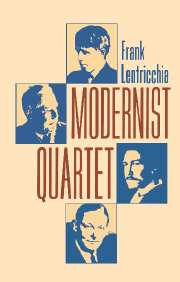Summary
By 1919, louis untermeyer – Robert Frost's most assiduously cultivated literary operative – could declare in the opening sentence to the first edition of his soon-to-be influential anthology, Modern American Poetry, that “‘America's poetic renascence’” was more than just a bandied and self-congratulatory phrase of advanced literary culture: “it is a fact.” And on the basis of that fact, or wish (it hardly matters which), Untermeyer and Harcourt Brace made what turned out to be a lucrative wager on the poetry market through seven editions of the anthology, the last of which entered the university curriculum and stayed there through the 1940s and '50s, bearing to more than one generation of faculty and students the news of the poetry of modernism and at the same time establishing, well into the '60s, a list of modernist musts: Frost foremost, together with strong representations of Pound, Eliot, Stevens, Williams, Hart Crane, and a long list of more briefly represented – and now mostly forgotten – poets. What Untermeyer had succeeded in presenting in his later editions was a stylistic texture of modern American poetry so varied as to defy the force of canonical directive. If the poetry of modernism could include Frost, Stevens, Pound, Marianne Moore, and Langston Hughes, then perhaps the phenomenon of modernism embraced a diversity of intentions too heterogeneous to satisfy the tidy needs of definition.
- Type
- Chapter
- Information
- Modernist Quartet , pp. 77 - 123Publisher: Cambridge University PressPrint publication year: 1994

